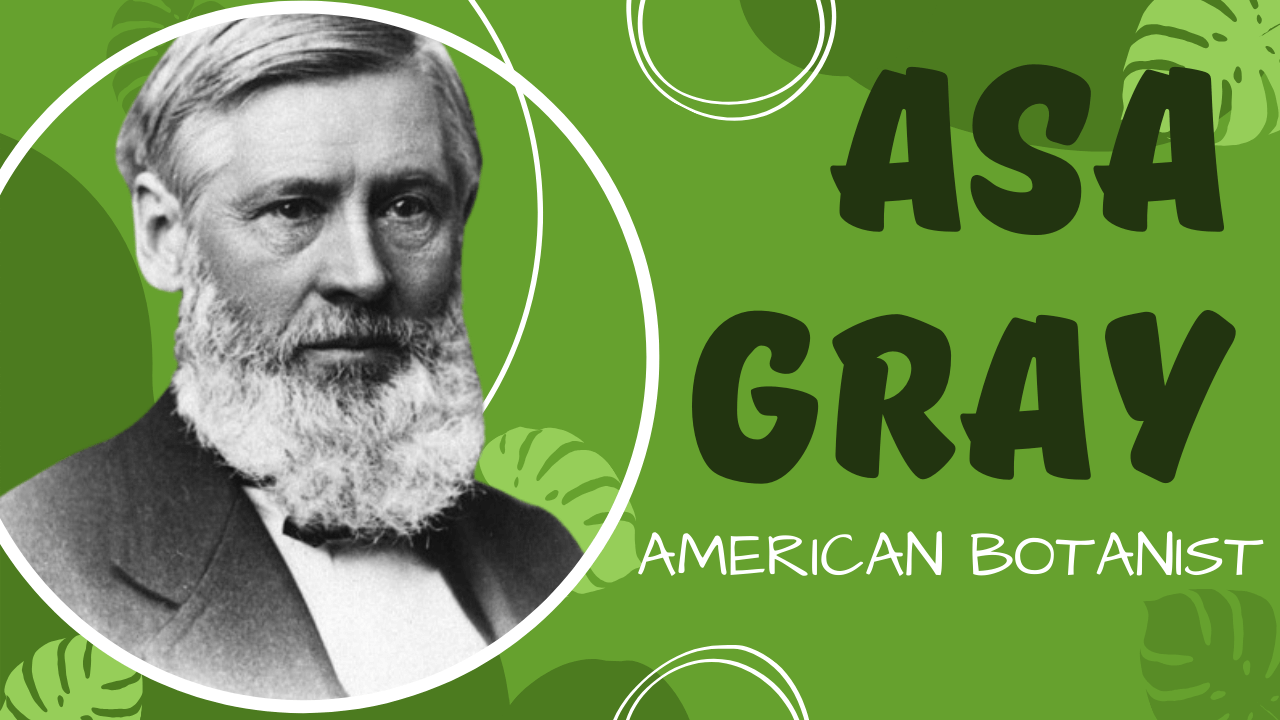Who was Asa Gray? Uncover the legacy of Asa Gray, a prominent figure in the world of botany and evolutionary biology. Explore his significant contributions to science, his influential work in botanical studies, and his role in the debate over Charles Darwin’s theory of evolution.

Asa Gray; (1810-1888), American botanist, who wrote the well-known Manual of Botany of the Northern United States. He also became famous as a supporter of Charles Darwin.
Gray was bora in Sauquoit, N. Y., on Nov. 18, 1810. After receiving his elementary education, he attended medical school in Fairfield, N. Y., and received his M. D. degree in 1831. After practicing only a few months, he became a schoolteacher and then was a librarian at the New York Lyceum of Natural History, a member of the scientific corps of the United States Exploring Expedition, and a professor of botany at the new University of Michigan. He wrote his first book, Elements of Botany, in 1836, and two years later collaborated with the American botanist John Torrey on Flora of North America.
Late in 1838, Gray went to Europe and visited leading botanists in Scotland, England, France Italy, Austria, and Germany. He examined many of the dried specimens of American plants in European herbaria, gaining knowledge that helped him in continuing his studies in New York after he returned to America in 1839.
Career at Harvard
In 1842, Gray was appointed to the Fisher professorship of natural history at Harvard University. He also became the director of the Harvard Botanic Garden and began building his private herbarium into what eventually became one of the most important institutions for the study of North American plants. While teaching at Harvard, Gray wrote a series of manuals and textbooks, the most popular of which was his Manual of Botany of the Northern United States. The first edition appeared in 1848; Gray continued to collect materials for the Flora of North America, but it was only after he retired from teaching in 1873 that he was able to publish them. The many plant specimens he received from the western United States and from overseas explorations led him to publish many reports and to arrange for the distribution of sets of these specimens among his correspondents in Europe.
Darwinism
Gray’s correspondence with Charles Darwin began in 1855, and in 1857, Darwin sent Gray an outline of his theory of natural selection. Before the publication of Darwin’s Origin of Species in 1859, Gray had already organized his botanical data to explain the double appearance of certain plants in eastern Asia and eastern North America in terms of variations of what had once been single species living around the North Pole before the Ice Age—a theory fully consistent with Darwin’s ideas. This work led Gray into debate with the Swiss-American naturalist Louis Agassiz, the leading opponent of Darwinism in America. It also made Gray a leader in advocating a fair hearing for Darwin’s work both in the United States and in Europe.
After a period in which Gray tried to convince Darwin that natural selection did not impair the notion that nature is the product of a preordained design, the two men parted company on philosophical and religious matters but remained lifelong friends and collaborators on botanical experiments. Gray wrote a series of articles on Darwinism and the doctrine of design, publishing them as Darwiniana in 1876. Gray died in Cambridge, Mass., on Jan. 30, 1888.